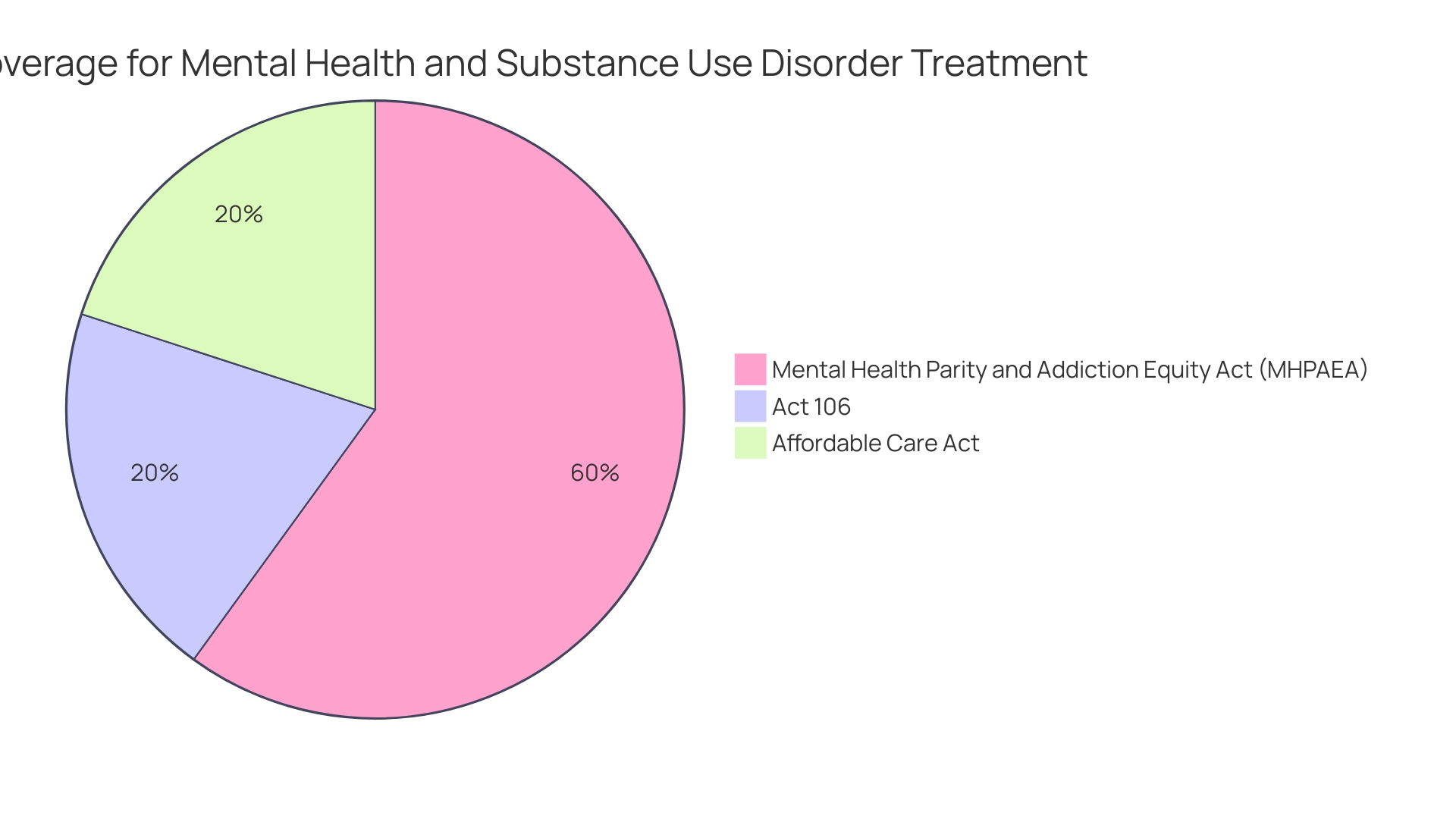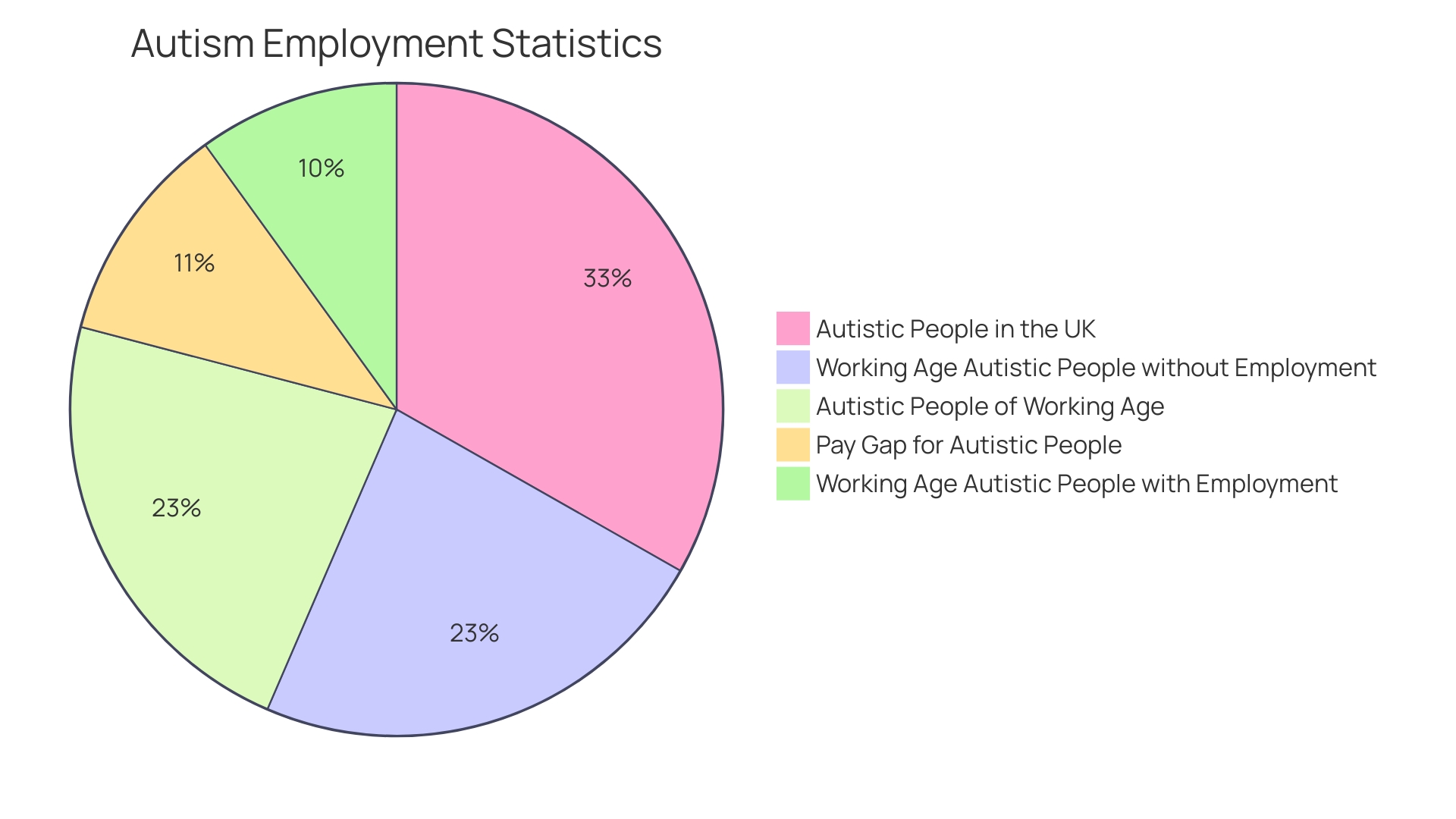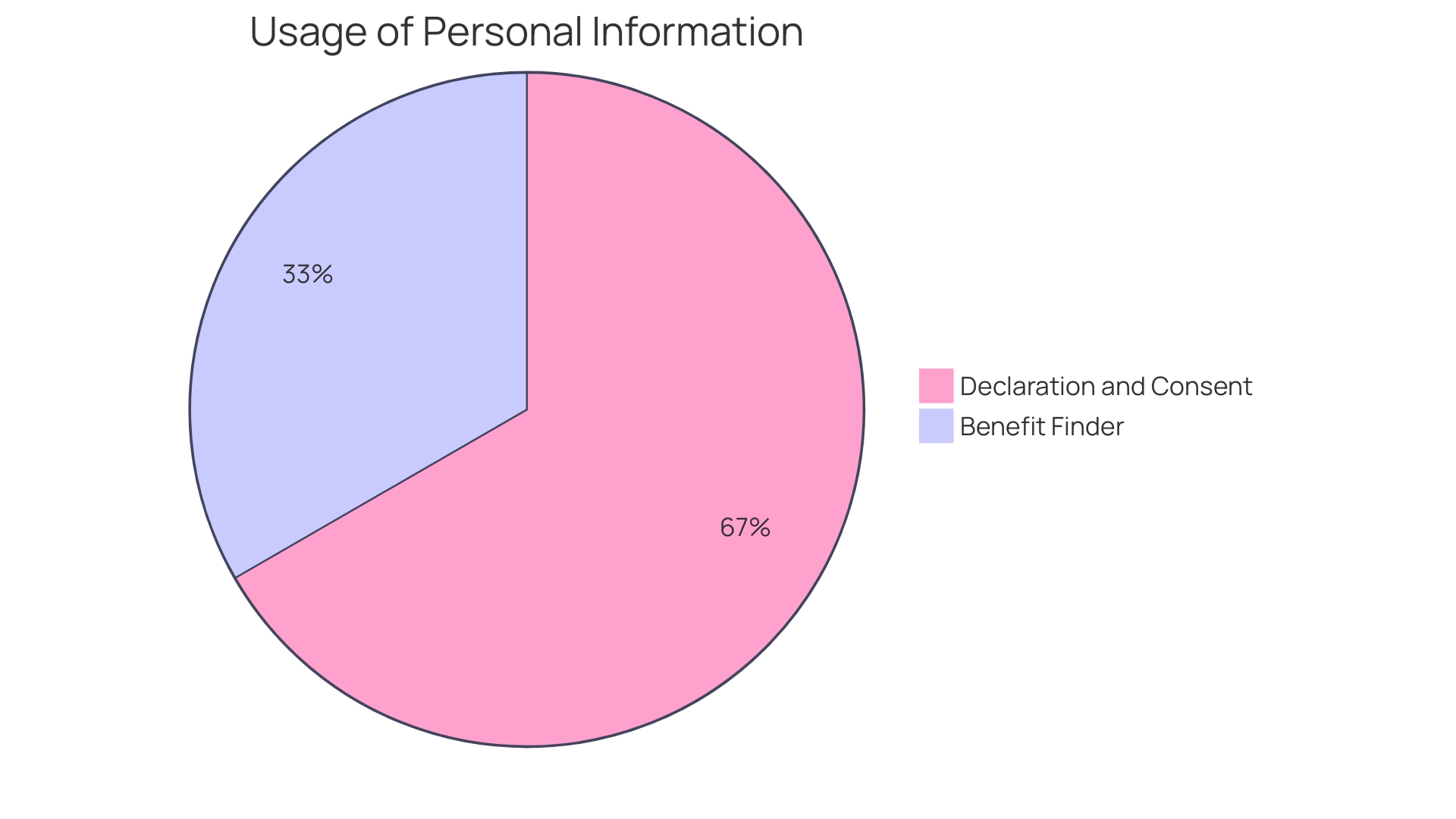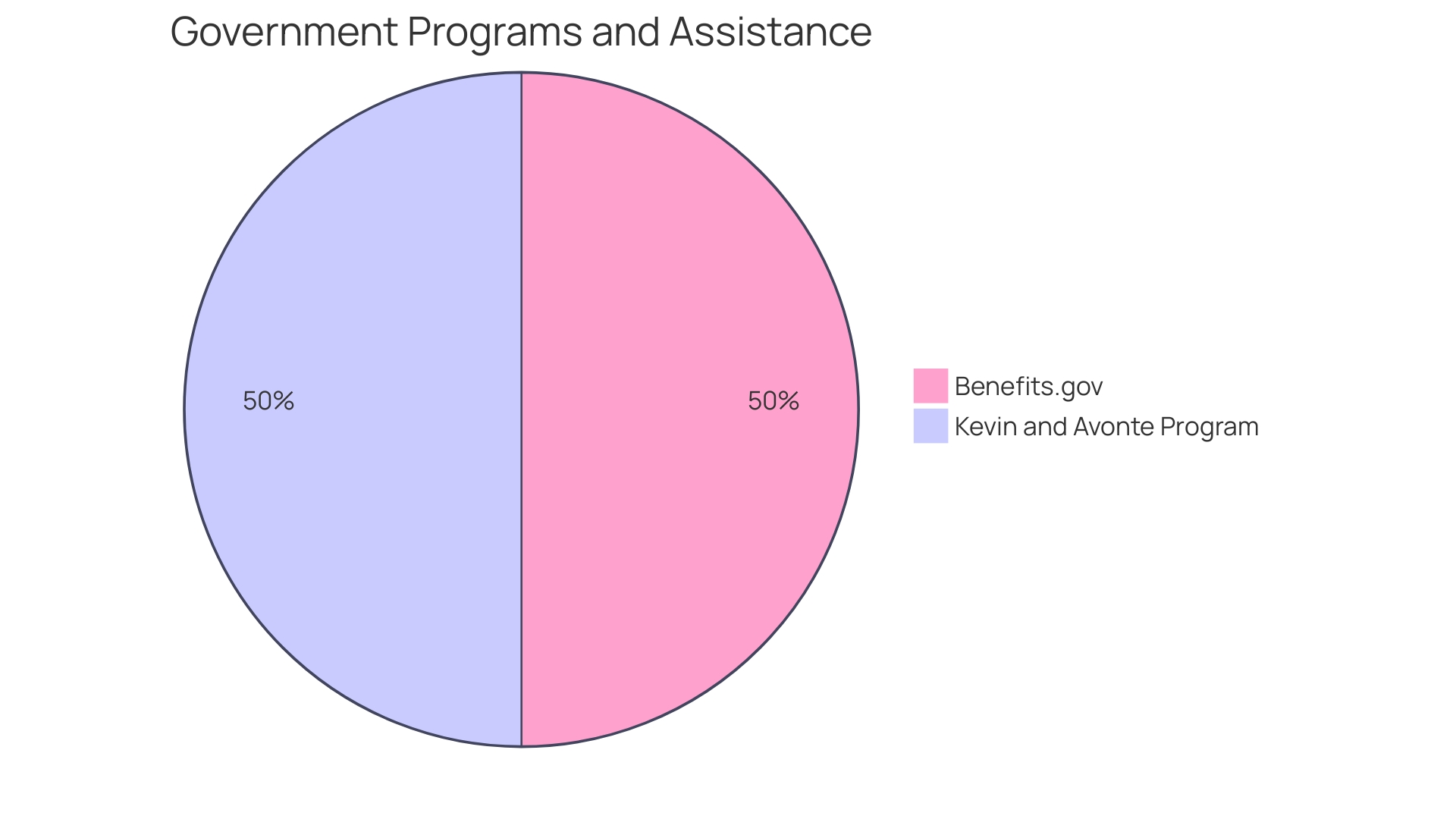Introduction
Navigating the complex landscape of autism benefits can be a daunting task for parents and caregivers. Understanding the varied assistance available state by state, including financial aid, therapy services, and educational support, is crucial for ensuring the well-being of children on the autism spectrum. Recent policy developments, such as the nationwide expansion of Medicaid under the Home and Community Based Services Rule, have addressed significant disparities and improved accessibility to vital support services.
However, variations in benefits by state can make the process challenging. It is essential for families to explore and utilize available resources to ensure comprehensive care and support. In this article, we will delve into the nuances of state-specific benefits, the key components of autism benefits, the importance of early diagnosis and intervention, types of services covered, the application process, tax implications, national organizations and local assistance, evaluating the autism-friendliness of states, examples of state-specific benefits, factors influencing autism benefits, state rankings, and navigating the complexities of autism benefit programs.
By understanding these aspects, parents and caregivers can navigate the system with confidence and empower themselves to advocate effectively for their loved ones with autism.
Understanding Autism Benefits
Navigating autism benefits requires an understanding of the varied assistance available state by state. Financial aid, therapy services, and educational support are among the resources that can make a significant difference in the lives of those on the autism spectrum. For instance, following advocacy efforts, Pennsylvania is considering adding Applied Behavior Analysis (ABA) to its Essential Health Benefits Benchmark Plan, acknowledging the importance of treating autism as a mental health condition. Guidance is available through Autism Response Team members, who offer personalized resources to the community. Moreover, a 2022 Report to Congress highlighted the vital support services covered by Medicaid, such as therapies and medication, emphasizing the recent nationwide expansion of Medicaid under the Home and Community Based Services (HCBS) Rule. This expansion includes services that, while once optional, are now mandatory, addressing significant disparities and improving accessibility. Additionally, initiatives like the Kevin and Avonte Program concentrate on preventing wandering incidents among autistic individuals, providing grants to bolster community safety measures. It is essential for families to explore and utilize such programs to ensure comprehensive care and support for their loved ones with autism.
Variations in Autism Benefits by State
Navigating state-specific autism benefits can be complex, with each state offering varying levels of support and coverage. For instance, advocacy efforts in Pennsylvania have highlighted the necessity to include applied behavior analysis (ABA) in the state's Essential Health Benefits Benchmark Plan. ABA is widely recognized as a critical and effective treatment for autism, supported by the classifications in both the DSM and the ICD, which define autism as a mental health condition. The profound impact of such inclusion is not only a matter of policy but also of accessibility and equity for those seeking autism services.
The landscape of autism services is further shaped by federal initiatives, such as the Home and Community Based Services (HCBS) Rule, which mandate certain previously optional services under Medicaid. This expansion has been crucial in addressing health disparities and ensuring that essential therapies, such as occupational, physical, and speech therapies, are accessible to all, particularly benefiting families who previously might have been financially unable to afford these services. The move towards outpatient services also aligns with cost-effectiveness and person-centered care, allowing individuals to receive support within their communities.
Moreover, the U.S. Department of Health and Human Services' 2022 Report to Congress emphasizes the disparities in supportive services for individuals with autism, urging a closer examination and action to bridge these gaps. The report sheds light on the critical services covered by Medicaid, private insurance, or self-pay, and acknowledges the importance of continued improvement in access and quality of care.
As states respond to these changes, the role of Medicaid becomes increasingly significant. Nearly one in every five people is insured by Medicaid, and with most autistic adults and many autistic children qualifying based on disability, the influence of state Medicaid programs on care access is undeniable. Notably, the Kevin and Avonte Program exemplifies targeted efforts to address specific challenges within the autism community, such as wandering and elopement, by providing grants to local initiatives.
Statistics on employee benefits suggest that direct comparisons between state and local government benefits and private industry may be misleading due to structural differences. Therefore, when assessing autism benefits, it is imperative to consider the unique contexts and legislative landscapes of each state.
In conclusion, for those seeking autism services, understanding the nuances of state-specific benefits, recent policy developments, and available support structures is vital. It ensures not only the ability to make informed decisions but also to advocate effectively for comprehensive and equitable autism care.

Key Components of Autism Benefits
Navigating the autism support system is crucial for ensuring children receive comprehensive care across their developmental spectrum. This includes securing a carefully considered diagnosis and evaluation, as well as gaining access to critical therapeutic interventions and educational accommodations. Moreover, medical coverage must be tailored to include the specific needs of autistic individuals, particularly as they transition into adulthood. The importance of such support is echoed by the words of Dr. David (Dan) R. Offord, who emphasized the need for equity in the supports provided to all children, including those with autism, to foster their mental health and community participation.
Recent developments, such as the expansion of Medicaid coverage through the Home and Community Based Services (HCBS) Rule, have mandated that services previously optional, such as occupational and physical therapies, are now covered. This is a significant step towards reducing health disparities and providing cost-effective, community-based care. Organizations like the Interagency Autism Coordinating Committee (IACC) and the Kevin and Avonte Program are pivotal in fostering progress in autism services. The IACC enhances coordination across federal agencies, reflecting diverse expertise, including that of autistic individuals and their families. The Kevin and Avonte Program, named after two autistic teens who tragically lost their lives due to wandering, has allocated $10.3 million towards initiatives aimed at preventing similar tragedies.
It's also vital to address the administrative burden on health care providers, which can detract from patient care. Efforts such as the digitization of medical visit notes can streamline processes, allowing for more focused care. Combined with the advocacy work of organizations urging for the recognition of autism as a mental health condition, these advancements contribute to a fairer, more supportive system for autistic individuals and their families. State-specific Medicaid plans further customize care, addressing the unique challenges within the autism community, impacting nearly one in five people insured by Medicaid.
Importance of Early Diagnosis and Intervention
Unlocking the potential in children with autism hinges on timely diagnosis and intervention. The journey begins with recognizing the first indicators of autism, which can manifest as challenges in social interaction, communication, and repetitive behaviors. Parents may notice signs as early as nine months old, such as a lack of eye contact or response to their name. These early signs are critical in prompting further evaluation and potentially leading to an early diagnosis, which is paramount for accessing early intervention services.
Early intervention programs are pivotal in fostering the growth and development of children with autism. These programs are designed to capitalize on the brain's plasticity during infancy and early childhood, offering personalized therapies that can significantly improve outcomes. The benefits of early intervention are well-documented, with research showing that the earlier behavioral therapy starts, the better the long-term prognosis for the child.
However, the path to diagnosis can be fraught with challenges. Traditional screening methods, like the M-CHAT-R/F questionnaire used during well-child visits, often fall short, especially in real-world settings. Their effectiveness varies across demographics, and they may miss crucial signs in girls and children of color. Moreover, the sensitivity of these tools is low, indicating a pressing need for more objective and scalable screening technologies.
To address these shortcomings, technological advancements are being leveraged to refine the diagnostic process. For instance, eye-tracking technology is emerging as a promising tool, providing objective insights into the early development of autism. New machine-learning models, such as AutMedAI, have also been developed, boasting an impressive 80% accuracy rate in identifying autism in children under two years old. This innovative approach, using a combination of parameters obtainable without extensive assessments, holds the promise of streamlining and enhancing the accuracy of autism diagnosis.
The importance of an accurate and timely diagnosis cannot be overstated. It not only allows for early intervention but also brings a deeper understanding and acceptance for autistic individuals and their families. Moreover, it opens up new relational opportunities and access to critical therapeutic supports, which can make a significant difference in the lives of those affected by autism. As we continue to learn about the dynamics of autism's development and the factors influencing its onset, embracing new diagnostic tools and methods becomes essential to ensure that no child's potential is left untapped.
Types of Services Covered by Autism Benefits
Navigating the array of services available for children with Autism Spectrum Disorder (ASD) is a task that demands both knowledge and attention to detail. Essential services such as Applied Behavior Analysis (ABA) therapy, speech and language therapy, occupational therapy, social skills training, and educational support are often integral to a child's development. Each of these therapeutic services plays a unique role in addressing the challenges faced by children with autism, aiming to enhance their ability to communicate, engage in social interactions, and participate in daily activities.
ABA therapy is a widely recognized approach that can significantly improve behaviors and skills, and its effectiveness is often most notable when initiated early in a child's life. Speech and language therapy addresses communication barriers, empowering children to express their needs and thoughts more clearly. Occupational therapy focuses on improving life skills and fostering independence, while social skills training enhances the ability to interact with peers and navigate social situations.
The importance of securing these services cannot be overstated, as echoed by experts in the field. According to a seasoned Board-Certified Behavior Analyst, who has developed technology solutions for streamlined care coordination, high-quality services tailored to each child's needs are vital for their progress. Dr. Dan R. Oxford, noted for his contributions to child psychiatry, emphasized the impact of supporting children with disabilities in all domains of life, which is key to their mental health and equitable treatment in society.
The Autism Community in Action (TACA) reinforces the idea that early and accurate diagnosis followed by prompt intervention leads to more favorable outcomes. NeuroQure, an innovative company addressing the need for early ASD identification, exemplifies the drive towards reducing the time to diagnosis. This urgency is further highlighted by the increased risk faced by children with a family history of autism.
Understanding insurance coverage is equally crucial. In Pennsylvania, for instance, the Mental Health Parity and Addiction Equity Act (MHPAEA) ensures parity in health coverage for mental health and substance use disorders, including autism services. It's imperative to discern the nature of one's insurance to fully comprehend the coverage and rights available, as well as any state-specific provisions under Medicaid plans and waivers.
The report to Congress by the U.S. Department of Health and Human Services, which includes a focus on supportive services covered by Medicaid, and the expansion of mandatory services under the Home and Community Based Services (HCBS) Rule, highlights the strides made towards comprehensive care.
In conclusion, understanding the types of services covered by autism benefits is a foundational step in crafting a comprehensive treatment plan for a child with ASD. It is a collaborative effort that benefits from the insights of professionals, the advocacy of organizations, and the support of federal and state programs to ensure that every child receives the care they need to thrive.
Application Process for Autism Benefits
Navigating the path to securing autism benefits requires a meticulous approach to ensure all necessary documentation is in place. The journey begins by gathering comprehensive medical history and information about the individual's needs, which can be a complex process given the potential for variations in records across different treatment facilities. It's crucial to compile a detailed account of the applicant's condition and the reasons why gainful employment is not feasible for them. Overcoming the intricacies of this process, such as discrepancies in medical records or lost documents, is essential for a successful application.
Statistics demonstrate the urgency of this endeavor, with approximately 1 in 70 people in the UK being autistic, and out of the working-age population, only about 3 in 10 autistic individuals are employed. This highlights the crucial need for access to benefits that provide support. Additionally, the recent review conducted over the summer of 2023, which included feedback from various stakeholders, underscores the importance of initiatives that foster awareness, reduce stigma, and harness the productivity of autistic employees.
When applying for autism benefits, it's not just about submitting an application; it's about creating a compelling case that conveys the individual's unique situation and needs. This includes leveraging technology solutions to enhance the coordination and quality of care, which can streamline the review processes for all involved parties. The end goal is to ensure that individuals on the autism spectrum receive the support they require to navigate their daily lives with dignity and as much independence as possible.

Tax Implications of Autism Benefits
Navigating the tax landscape can be challenging for families of children with autism, particularly when it comes to understanding potential deductions or credits. For instance, the Child Tax Credit remains a valuable option, with a current maximum value of $2,000 per child under 17. Importantly, up to $1,600 of this credit is refundable, meaning it could increase a tax refund by that amount even if no taxes are owed. This credit is available to single parents with incomes below $200,000 and married couples filing jointly with incomes below $400,000.
Furthermore, the U.S. Department of Health and Human Services' 2022 Report highlights the expansion of Medicaid coverage for services like occupational, behavioral, and speech therapies due to recent changes in the Home and Community Based Services (HCBS) Rule. This expansion is a significant step for autism care, making essential therapies more accessible.
Tax obligations may also arise from receiving benefits, as not all Social Security benefits are exempt from taxes. According to the IRS, the portion of Social Security benefits subject to tax depends on combined income, which is an individual's adjusted gross income plus nontaxable interest and half of their Social Security benefits. It's a tiered system, and misconceptions abound regarding tax exemption based on age, when in fact, income and filing status are the primary determinants.
With the federal government investing over $500 billion annually in children's services, including tax credits, it's clear that these supports are vital for reducing poverty and offering long-term societal benefits. As families plan their finances, understanding these tax implications is crucial for maximizing benefits and ensuring compliance with tax laws.

National Organizations and Local Assistance
For families navigating the complexities of autism, a myriad of organizations stand ready to offer support, assistance, and a community of understanding. Among these is the Kevin and Avonte Program, established to address the critical issue of wandering, a behavior sometimes exhibited by individuals with autism. In memory of two teens whose lives were tragically cut short, the program has allocated over $10 million since 2018 to fund 77 grants. These grants bolster local efforts to prevent wandering-related injuries and fatalities through public education, community partnerships, and the development of alert systems and emergency protocols.
State Medicaid plans are also pivotal, shaping care for nearly one-fifth of the U.S. population, including many with autism. These state-specific strategies become a lifeline for individuals with autism, addressing challenging behaviors and enhancing access to vital services. Furthermore, the Autism Speaks Walk exemplifies community solidarity, fundraising for research, advocacy, and services, all while fostering an inclusive environment even for those with sensory sensitivities.
This focus on support extends to educational realms as well. Regular webinars, such as those organized by Laura McKenna through McKenna Connections, empower parents with the latest knowledge on top-tier programs, filling a gap often left by traditional guidance counseling. In the same vein, the recent $5 billion investment in autism research and services since 2006 has transformed our understanding and support systems for those with autism, though the fight for continuous funding and expansion of efforts remains critical.
As we embrace these resources, Kelley Coleman's insights remind us to stay informed about new developments in treatments and medications, underscoring the importance of understanding the benefits and risks for the well-being of our children. The collective efforts of these initiatives, along with the latest changes in Medicaid service coverage, as detailed in the U.S. Department of Health and Human Services' 2022 Report to Congress, are shaping a fairer landscape for those with autism to thrive in every major aspect of their lives.
Evaluating the Autism-Friendliness of States
The landscape of autism support across the United States is not uniform, with some states providing more robust resources and programs than others. When considering the best place for a family with an autistic child to live, there are multiple factors to weigh, including the availability of healthcare, educational inclusion, support services, and legal measures that protect and empower those with disabilities. Reports from organizations like the Boston University School of Public Health and Sharecare have used a variety of domains to gauge the well-being of Americans, which can also reflect on a state's autism-friendliness. Metrics such as access to healthcare, resources, and transportation are critical for families seeking the best care for their children with autism.
WalletHub's analysis, which includes factors like the cost of living and healthcare effectiveness, further aids in determining the most disability-friendly cities, which can be a proxy for autism support. Their study takes into account the employment rate for individuals with disabilities, accessibility, and the availability of specialized care, which are instrumental in evaluating the autism-friendliness of a location.
Understanding that legislation can significantly impact the lives of individuals with disabilities, it is crucial to consider how state laws and Medicaid programs address the needs of the autism community. The Kevin and Avonte Program, for example, reflects the kind of targeted initiatives that can make a difference, highlighting the importance of proactive community efforts and emergency protocols for those with developmental disabilities.
For those looking to influence the legislative landscape, it is advised to connect with state representatives, emphasizing the broader impact of bills on the disability community. Such advocacy underscores the interconnectedness of legislative action and the well-being of individuals with autism.
By keeping these factors in mind, parents and caregivers can make informed decisions about where to reside, ensuring the best possible support and resources for their children with autism.
Examples of State-Specific Benefits
As we delve into the landscape of autism benefits, it's important to consider the real-world implications of policies and the tangible impact they have on families and individuals. For instance, the recent advocacy efforts in Pennsylvania exemplify the push for including applied behavior analysis (ABA) in the Essential Health Benefits Benchmark Plan. ABA is widely recognized as an effective intervention for autism, and its inclusion reflects a broader understanding of autism as a mental health condition, a classification supported by both the DSM and ICD.
The 2022 Report to Congress on Supportive Services for Individuals with Autism by the U.S. Department of Health and Human Services sheds light on the coverage of critical services like occupational, behavioral, and speech therapies. These services, essential for many individuals on the autism spectrum, have historically faced coverage disparities. The implementation of the Home and Community Based Services (HCBS) Rule marks a significant policy shift, transitioning many 'optional' Medicaid services to 'mandatory' coverage. This expansion not only reduces financial burdens for families but also supports a more person-centered approach, enabling autistic children and adults to receive necessary services within their communities instead of institutional settings.
Navigating the array of benefits can be daunting, which is where resources like Benefits. Gov become invaluable. The site provides a user-friendly gateway to federal, state, and local assistance programs, complete with eligibility details and application links. It's a tool that empowers individuals to discover potential support options, including those specifically tailored for the autism community.
Focusing on proactive measures, the Kevin and Avonte Program is a testament to the power of dedicated initiatives, addressing critical safety issues like wandering and elopement among autistic individuals. This program not only funds efforts to locate those who have wandered but also champions increased public awareness and the development of community partnerships.
Each state approaches the support of the autism community uniquely through Medicaid plans and waivers. With a significant portion of the population, including most autistic adults and many autistic children, relying on Medicaid, these state-specific programs play a vital role in shaping access to care and services. As we examine various state benefits, it's clear that the combination of advocacy, policy reform, and accessible resources is key to improving the lives of those touched by autism.
Factors Influencing Autism Benefits
The landscape of autism benefits across states can vary significantly due to a multitude of influencing aspects. Budgetary allocations within each state play a pivotal role, as they determine the extent and quality of services available. Expertise and advocacy efforts are also instrumental in shaping policy and expanding services. For instance, a Board-Certified Behavior Analyst with over ten years of clinical experience has been vital in enhancing technology solutions to ensure best practices and high-quality care for patients with autism. This dedication to innovation and care quality reflects the ongoing push for coordinated care and streamlined processes that benefit both providers and health plans.
Recent advocacy initiatives have sought to classify autism spectrum disorder as a mental health condition, as per the DSM and ICD, to expand essential health benefits. Public comments to the Pennsylvania Insurance Department illustrate these efforts, advocating for the inclusion of Applied Behavior Analysis (ABA) in the state's Benchmark Plan, demonstrating a proactive stance in public policy participation.
Continued dialogue and action are exemplified by the Eagles Autism Foundation's support for Governor Shapiro's work, which aims to provide better access to autism services. The foundation's commitment to funding research and providing critical resources underpins the shift from awareness to action in the autism community, indicating a collaborative approach to improving outcomes for those with autism.
Furthermore, federal initiatives such as the Autism CARES Act have transformed the understanding and acceptance of autism, with research funded by this act revealing that autism is far more prevalent than previously thought. Acknowledging the significance of this research, Congresswoman Diana Harshbarger has emphasized its importance in informing clinical care and family resources.
The Kevin and Avonte Program's focus on wandering and elopement prevention is another facet of how specific legislation can address the needs of the autism community. The program has allocated over $10 million to various initiatives since 2018, demonstrating the significant impact of targeted federal funding.
Understanding these components is crucial for anyone advocating for enhanced autism benefits. By recognizing the roles of state budgets, advocacy, legislative action, and public awareness, stakeholders can work towards a more inclusive and supportive environment for individuals with autism and their families.
State Rankings for Autism Benefits
Diving into the array of autism benefits offered across the nation, we find a landscape diverse in the comprehensiveness of services, financial assistance, and inclusive policies. A recent analysis sheds light on how different regions stack up in their support for individuals with autism. For instance, it highlights cities like Scottsdale, Arizona, and Denver, Colorado, which are leading the way, according to WalletHub's rankings. These cities have been appraised on multiple factors, including healthcare quality, economic considerations, and overall quality of life, with metrics analyzing the cost of in-home care, employment rates for people with disabilities, and the availability of specialized health professionals.
In the realm of autism treatment, the Council of Autism Service Providers has unveiled new guidelines for Applied Behavior Analysis (ABA), aiming to standardize care and ensure its high quality. ABA's effectiveness is widely recognized, but its impact hinges on proper implementation. Meanwhile, state-specific approaches are being crafted via Medicaid plans and waivers, addressing the unique needs of the autism community. The Kevin and Avonte Program, in particular, stands out for its targeted focus on preventing wandering and elopement behaviors, a critical safety issue within the community.
The urgency of these issues is underscored by the fact that nearly one in five people are covered by Medicaid, with a significant portion of the autism population depending on it for access to essential services. The Autism CARES Act has been pivotal in enhancing autism research and services with a $5 billion investment since 2006. However, with the looming expiration of this act in 2024, there's a push for reauthorization and expansion to continue addressing the complex challenges faced by individuals with autism.
Evaluating the state of children's services, reports like the State of America's Children by the Children's Defense Fund provide a comprehensive view using publicly available data, enabling transparency and replication of findings. Such reports are crucial in understanding the current climate and the effects of the COVID-19 pandemic on children, particularly those with autism, reinforcing the need for continued advocacy and policy development to support these vulnerable members of our society.

Navigating Complexities in Autism Benefit Programs
Understanding and accessing autism benefit programs can be a complex journey. A first step often involves gathering comprehensive information about the child's medical history and the impact of their disability on daily functioning. Challenges may arise from inconsistent records across different hospitals or lost documents, highlighting the need for meticulous record-keeping.
To streamline the process, the Benefits.gov website serves as a valuable resource, offering a confidential Benefit Finder tool. By responding to specific questions about the individual's situation, this tool generates a tailored list of potential federal, state, and local programs that may provide financial support for a variety of needs.
In addition to online resources, personal stories and expert advice can be instrumental. Kelley Coleman's upcoming book, 'Everything No One Tells You About Parenting a Disabled Child,' is set to be a comprehensive guide, combining practical advice with personal experiences to navigate the intricate systems of care and support.
For parents seeking to address wandering or elopement behaviors, the Kevin and Avonte Program awards grants to local initiatives that focus on preventing and responding to such incidents. This demonstrates the targeted support available for specific challenges within the autism community.
Furthermore, state Medicaid plans offer a range of services tailored to individual states' needs, reflecting the significance of local approaches in managing autism-related challenges. The Interagency Autism Coordinating Committee (IACC) plays a pivotal role in this regard, guiding research and services across different federal agencies and collaborating with the autism community to enhance the coordination of care.
In the news, recent funding initiatives by the U.S. Department of Housing and Urban Development and the potential implications of a government shutdown underscore the importance of timely access to services and the vulnerability of support systems during periods of uncertainty.
Ultimately, by leveraging available tools, seeking expert insights, and staying informed on policy developments, parents can navigate the complexities of autism benefit programs to secure the necessary support for their child.

Conclusion
Navigating the complex landscape of autism benefits requires understanding state-specific assistance and utilizing available resources. Recent policy developments, like the nationwide expansion of Medicaid under the Home and Community Based Services Rule, have improved accessibility to vital support services. However, variations in benefits by state can present challenges.
It is crucial for families to explore and utilize resources to ensure comprehensive care and support for their loved ones with autism.
Understanding the key components of autism benefits is essential. This includes securing a diagnosis, accessing therapeutic interventions and educational accommodations, and tailoring medical coverage to specific needs. Early diagnosis and intervention play a crucial role in unlocking the potential of children with autism, and advancements in diagnostic tools are enhancing accuracy.
Navigating the application process for autism benefits requires a meticulous approach and leveraging technology solutions. Understanding the tax implications of benefits is also important for maximizing support. National organizations and local assistance programs provide valuable support and resources.
Evaluating the autism-friendliness of states helps families make informed decisions about where to reside.
Examining state-specific benefits and factors influencing autism benefits highlights the real-world impact of policies and advocacy efforts. State rankings for autism benefits provide insights into the comprehensiveness of services across regions. Navigating the complexities of benefit programs requires comprehensive information, online resources, personal stories, expert advice, and staying informed on policy developments.
In conclusion, by understanding state-specific benefits, recent policy developments, and available support structures, parents and caregivers can navigate the system with confidence and advocate effectively for their loved ones with autism. This empowers them to ensure comprehensive care and support, fostering the well-being and potential of children on the autism spectrum.




